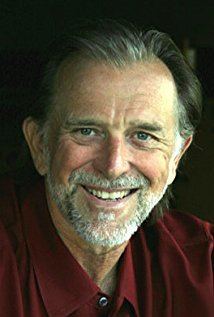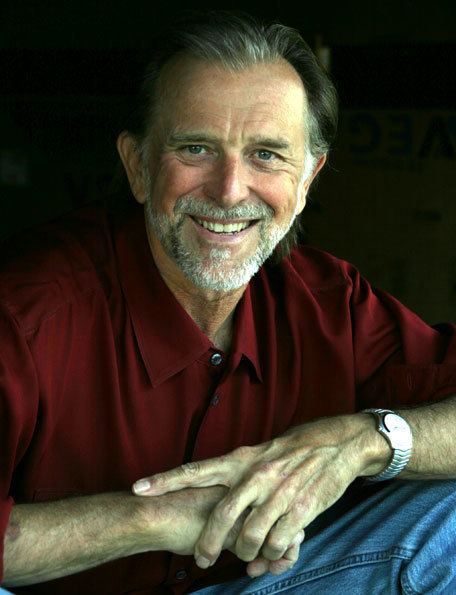Nationality American Role Filmmaker Spouse Cass McCune (m. 1996) | Years active 1971–present Children Chloe Dykstra Name John Dykstra | |
 | ||
Full Name John Charles Dykstra Similar People Profiles | ||
Occupation Special effects artist | ||
'Star Wars' At 40: A Look Back At The Film By Those Who Made It | NBC News
John Charles Dykstra, A.S.C. (born June 3, 1947 in Long Beach, California, United States) is an American special effects artist, pioneer in the development of the use of computers in filmmaking and recipient of three Academy Awards, among many other awards and prizes. He was one of the original founders of Industrial Light & Magic, the special effects and computer graphics division of Lucasfilm. He is well known as the special effects lead on the original Star Wars, helping bring the original visuals for lightsabers, space battles between X-wings and TIE fighters, and Force powers to the screen. He also led special effects on many other movies, including Batman Forever, Batman and Robin, Stuart Little, X-Men: First Class, Spider-Man and Spider-Man 2.
Contents
- Star Wars At 40 A Look Back At The Film By Those Who Made It NBC News
- John Dykstra
- Education and early career
- Star Wars
- Battlestar Galactica
- Firefox and the 1980s
- Comic book films
- Video games
- Two Academy Awards for Best Visual Effects
- One Academy Award for Technical Achievement
- Saturn Awards
- Primetime Emmy Awards
- Hollywood Film Awards
- OFTA Film Awards
- Sitges Award for Best Special Effects
- Golden Satellite Awards
- Visual Effects Society Awards
- References

John Dykstra
Education and early career

After studying industrial design at California State University, Long Beach (where he was a member of Phi Kappa Tau Fraternity), in 1971 Dykstra landed a job working with Douglas Trumbull on Silent Running filming model effects, when Trumbull hired recent college graduates due to the film's low budget.
Star Wars

In 1975, when George Lucas was recruiting people for the special effects work on Star Wars, he approached Douglas Trumbull, but he was unavailable as he was about to start working on Steven Spielberg's Close Encounters of the Third Kind. Trumbull pointed Lucas towards Dykstra. Lucas formed his own special effects company, Industrial Light & Magic (ILM), based in warehouse premises in Van Nuys, and appointed Dykstra to supervise the new team. This led to the development of the Dykstraflex motion-controlled camera, which enabled many of the film's groundbreaking effects to be produced. The system was made possible by the availability of off-the-shelf integrated-circuit RAM at relatively low cost and secondhand VistaVision cameras.

However, tensions arose between Dykstra and Lucas, the latter complaining that too much time and money was spent on developing the digital camera systems and that the effects team did not deliver all the shots that he had wanted causing the production to run behind schedule. These tensions would reportedly culminate with Dykstra's dismissal from ILM following Lucas' return from principal photography in London. Regardless, following the release of Star Wars, Dykstra and his team won Academy Awards for best special effects and special technical achievement.
Battlestar Galactica
After Star Wars, Dykstra began working on Battlestar Galactica for Universal Studios. Supervising the special effects for the three-hour pilot episode (which was also released theatrically), Dykstra formed his own effects company called Apogee, Inc. which included several ILM employees who had worked on Star Wars. Dykstra was also given a Producer credit for the pilot of the television series. As Universal then opted to make Galactica into a weekly series, many of Dykstra's effects shots were recycled and used repeatedly throughout the show's single season run.
After Galactica aired, Lucas and 20th Century Fox began legal proceedings against Universal claiming that they had plagiarised Star Wars, a matter not helped by the similar effects and design styles (artist Ralph McQuarrie had also contributed to Galactica). Lucas was also reportedly unhappy about Dykstra using the equipment (that had been developed and paid for from the Star Wars budget) on a production that was essentially a competitor. When Lucas relocated ILM to San Francisco from Van Nuys to commence work on The Empire Strikes Back, several members of the Apogee team (including Richard Edlund and Dennis Muren) would return to ILM but Dykstra was not invited to join them. He continued to work under his Apogee brand name and subsequently went to work on the effects for Avalanche Express and Star Trek: The Motion Picture (on which he was reunited with Douglas Trumbull).
Firefox and the 1980s
Dykstra's next major achievement was the effects work on Firefox in 1982. Here, he took on the same challenge that Lucas had set with The Empire Strikes Back of combining miniature effects with actual backgrounds and matte work on white backgrounds using reverse bluescreen. The film secured further awards but was only a modest box office hit.
In 1985, Dykstra produced the special effects for the sci-fi horror film Lifeforce which was made in England. He followed with work on the 1986 remake of Invaders from Mars and My Stepmother Is an Alien (1988).
Comic book films
In the mid-1990s, Dykstra was supervisor for the special effects of Batman Forever and Batman and Robin. He was also Senior Visual Effects Supervisor for Stuart Little. Dykstra was Visual Effects Designer on the first two Spider-Man films, and was rewarded with an Oscar for Best Visual Effects for his efforts on Spider-Man 2. He also acted as Visual Effects Designer on X-Men: First Class, ensuring the six effects companies involved delivered all the shots required despite the tight schedule.
Video games
In 1987, Dykstra directed the full-motion video game Sewer Shark, originally intended for Hasbro's VHS-based NEMO console. When Hasbro abandoned the project, the system's creator Tom Zito acquired the rights to the game. In 1992, Sewer Shark was converted to the Sega CD by Zito's Digital Pictures, and released as a launch title for the system.
